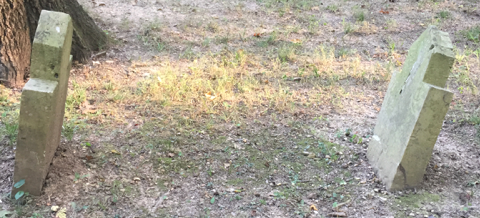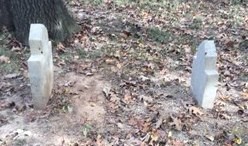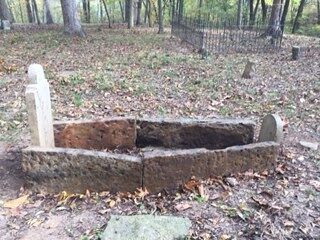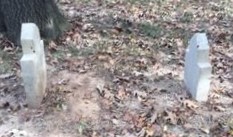The main purpose of a gravesite is to provide a resting place, but it is also to provide a place where family and friends can visit and show respect to the deceased. Styles of graves and gravestones can vary in style due to income, social class, location, religious beliefs, and time period.
Thomas Patterson Ellison’s grave is the oldest in the Union Campground Cemetery, and it has a headstone and footstone that match in shape and size. The peaked tops and flat shoulders of the gravestones reveal that this was originally a slot-and-tab tomb, where a rectangular slab, with cut-outs at each end, fit onto the shoulders of the two gravestones, creating a tomb-like effect.
Rebecca Roper, who died only six years after Ellison, has a similarly elaborate grave. While the footstone is a simple tablet with an oval top, the headstone has a more complex round top with concave shoulders. Together with the side rails, these gravestones mimic a bed, reiterating that this is a resting place.
The grave of J. E. Davis is from the same time period, but this monument contrasts with Roper’s and Ellison’s graves in taking the simple but striking form of a huge ledger stone. This type of monument was laid flat on the ground, to be embellished with a long, elaborate inscription.
Before conservation:

After conservation:

American Midwest Ozarks culture
1840
Limestone, each stone L. 39.4 cm x W. 1.21 cm x H. 61 cm
Union Campground Cemetery #20 and 21
Before conservation:

After conservation:

Midwest American Ozarks culture
19th century
Limestone, L. 1.98m x W. 86.4 cm x H. 81.3 cm
Union Campground Cemetery #22
For more information, you may contact the researcher(s) noted in the title of this exhibit entry, or Dr. Billie Follensbee, the professor of the course, at BillieFollensbee@MissouriState.edu

